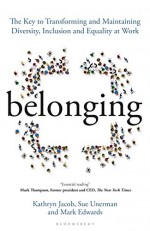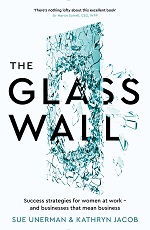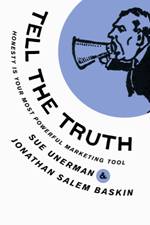Can’t smell you, can’t touch you, can’t make eye contact with you, can you still motivate me?
The movie director John Boorman has written that when he wanted to get the most out of a movie star during a shoot, he would make a small adjustment to their hair just before filming. He said that this was about proving his attention to detail, to ensure that the actor knew that he could absolutely trust that he wanted the best for them.
There are no movie shoots at the moment of course, but the point remains, that a touch to add confidence (not in a creepy #metoo way) is impossible at work now.
You can’t smell your colleagues either. Smell is a very profound sense. People who have suffered from Covid and recovered, talk about how disorientating the loss of smell has been. Smell is one of the oldest of all the senses. A familiar scent can revive all kinds of memories. (They can also sell your house. Top tip for showing property is to have some vanilla toasting under the grill). It is even likely that when we feel attracted to someone it is as much to do with how they smell as how they look. Patrick Suskind’s novel Perfume spins a fantasy tale of the impact of how an individual can change his impact through his scent. So, whether you recognize this consciously or not, you now can’t smell the people you are in a meeting with via video, or at a social distance from.
There is no eye contact. Not in the way that you have when you are in a one to one meeting in real life.
And micro-expressions are much harder to read. And easy to mis-read. Especially when poor wifi delays their impact. Less than 10% of communication is verbal and so much body language is lost on a Zoom call. Micro-expressions which are only a few seconds in total are a massive part of how we react to someone, and this is now either lost or misconstrued.
When we give our Glass Wall Talks, Kathryn Jacob and I are often asked about speaking up in meetings and how to overcome nervousness. We have to stress that it is important to understand that when you are in a meeting people aren’t judging exactly what you say because they are mostly worried about how they are coming across themselves. Now they are literally watching how they come across. Is there any point to seeing yourself other than vanity? Imagine how a real life meeting would be if everyone had their own mirror to be distracted by.
It is still possible to connect emotionally, but you need to think about it differently. In a way it is like moving from being an actor in a small theatre to becoming a movie star. Michael Caine’s masterclass on this has some lessons for us all now – see 6 minutes in for how to handle a close up.
3 tips for video calls:
- When you need to make a connection look into the camera, not at someone’s face. If there are 6 people in the meeting and you are looking at someone on the bottom left of your screen it will look like you are not looking at them.
- Ask the people in your meeting lots of questions. Don’t deliver a long monologue. Most people don’t have the attention span for this in real life, let alone on a video call – you will lose some of them to admiration of their own image.
- Tell stories, short stories, to keep people’s attention. Lee Child writes mass market thrillers that are ultimate page turners. How can you adopt the page turner technique (without the violence) to ensure you sell your points? Here you need to think like a script writer for an unmissable USA TV show where every frame delivers drama, laughter, or emotional resonance.



Forget average.
Wednesday, June 24th, 2020No more planning for the average
How average are you? Most people consider themselves above average. It is a behavioural heuristic known as illusory superiority. Yet planning for the “average” or typical person is normally how we make things work.
Offices for example are planned for the average person. Average size, average outgoing personality, and average behaviour. But those averages have become meaningless since Covid19 changed our lives. MediaCom’s 5 offices across UK accommodate about 1500 people normally. Since lockdown of course we have moved from 5 offices to 1500. Each individual workplace is tailored by each colleague to a greater or lesser extent depending on who they live with, where they live, and what kind of flexibility that affords. It has been remarkable how swiftly we have all adapted, with not one ball dropped, with an overnight transition. The rhythm of the office has been disrupted and many believe it will never entirely return to pre-Covid conditions.
This gives us a once in decades chance to reconsider everything, and re-imagine what office life is for and how it should work. Pre-lockdown offices were largely based on what had gone before. Some people had fruit and sweets and hanging out areas on top of a series of desks and laptops but one office more or less matched another. Now we can really get radical.
Jeremy Lee points out that planning for exceptional behaviour rather than the average will be good, even great, for advertising, writing: “offices as collaborative spaces, to be used from time to time and only when necessary: this sounds like a progressive move that the entire industry – and its employees – can benefit from.” There is a paradox. Some are thrilled at the prospect of returning to work. Others are dreading the commute and a resurgence of the culture of some businesses’ toxic presenteeism.
There is no consensus at the moment about lockdown easing. There is also no consensus in terms of public sentiment.
Britain is awash with paradox. FOGO – fear of going out and BOSH – bored of staying home. People are anxious about conspicuous spending and yet also yearning for treats as USA MediaCom CSO Anush Prabhu points out in a recent podcast.
Many advertising strategies segment audiences into cohorts with similar attributes. Creative and media strategies are developed to reach the average person in each of those 5-8 tribes. Yet within the tribes there are polarized attitudes which are made more extreme by lockdown conditions. For example, a Gen Z living with their grandparents will not have the same attitudes or behaviour as another who is not. A mum of two who is a key worker won’t feel the same as a mum of two who is furloughed. The differences in outlook mirror the diversity mosaic of the UK. Just as MediaCom now has over 1000 offices instead of 5, there are many more than 1000 consumer types instead of 5 for every sector. We don’t need to aggregate for an average any more, we can examine the detail and plan against it.
Media planning was originally designed for averages. But it has been reinvented for individuals.
Media intelligence can observe the differences and the commonalities and create effective solutions. Are you a TikToker or a Pinterester? OTT or linear TV? Instagrammer or Facebook? Amazon or eBay? Every one of those consumer types will create a data trail of intelligence that allows the design of communications strategies to best drive outcomes for the brand.
Group M’s global ceo Christian Juhl has pointed out that adaptability and fast understanding of data are crucial as communities exit lockdown. “In China, where lockdowns have eased, we’ve done things like track road-traffic activity to identify when and where weekend travel has or has not returned to normal.”
There is no more “average”. We are divided by our experiences now more than ever. The challenge of 2020 is to diagnose and plan for the differences and at the same time seek the common human cultural truths that bring us together.
Posted in MediaComment | No Comments »